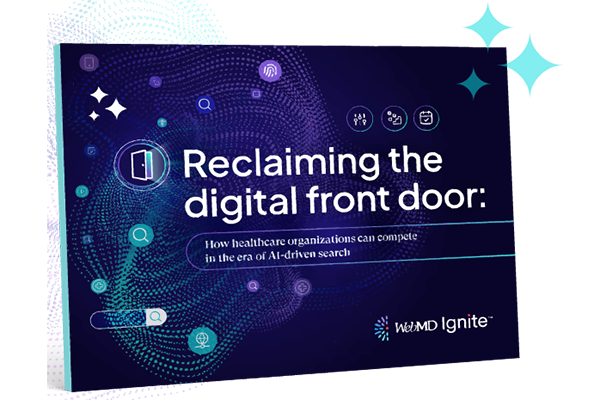From discharge to success: The role of health education in reducing avoidable readmissions

Approximately 17% of Medicare discharged patients are readmitted within 30 days. These readmissions don’t just strain hospital operations — they also cost the Medicare system more than $26 billion annually.1 For patients, families, and providers alike, discharge too often feels like the beginning of a countdown to return.
The challenge is clear: avoidable readmissions drain revenue, damage reputation, and pull down quality metrics. But there’s also an opportunity — leveraging high-quality, consumer-facing education to empower patients and caregivers after they leave the hospital.
Readmissions are a big deal. Here’s why:
- Financial penalties: Under the Centers for Medicaid and Medicare Services (CMS)’s Hospital Readmissions Reduction Program (HRRP), hospitals with higher-than-expected readmissions for conditions like heart failure or pneumonia face reimbursement cuts of up to 3%. For large systems, that can translate into millions lost each year.
- Patient trust and reputation: A bounce-back often signals incomplete care, leaving patients and families feeling frustrated or abandoned. Over time, this can erode loyalty and drive patients to seek care elsewhere.
- Quality scores: Readmissions negatively impact CMS Star Ratings, Leapfrog scores, and other public-facing quality measures that influence patient choice, referral patterns, and even eligibility for incentive payments.
After five straight years of decline, the share of hospitals facing readmission penalties is once again on the rise. According to CMS, 8.1% of hospitals — up from 7% the year before — are set to pay penalties of 1% or more in fiscal 2026.2 The takeaway is clear: avoiding unnecessary readmissions isn’t just about protecting margins. It’s also about building trust, safeguarding reputation, and ensuring patients feel fully supported in their recovery.
Health education plays a vital role in eliminating readmissions
It’s a fact. High-quality, consumer-friendly education is one of the most effective tools for reducing unnecessary readmissions. Consider:
- A meta-analysis of educational nursing interventions found a 36% reduction in the risk of hospital readmission among patients who received structured education.3
- A study at the University of San Francisco demonstrated a 21.4% reduction in 30-day readmission rates following the implementation of standardized patient education programs.4
It makes sense. Patients who understand their condition, treatment plan, and self-care steps are better prepared to manage their recovery.
Education is a healthcare organization’s best friend. It:
- Supports high-quality outcome measures and value-based care (VBC) contracts.
- Drives improvements in specific service lines.
- Reaches critical audiences like caregivers and family members who may not be fully engaged during the clinical encounter.
- Strengthens health literacy and confidence, helping patients avoid the complications that lead to readmissions.
When health systems make education accessible, engaging, and easy to understand, they give patients the knowledge and confidence to succeed outside the hospital walls.
Health education empowers patients to take action
With automated, timely patient education, health systems and care providers can better inform, empower, and activate patients throughout their care journey. To be most effective, education content should:
- Be trusted and credible. This includes information that is clinically reviewed and URAC-accredited, and made available in multiple formats such as articles, videos, quizzes, and interactive tools.
- Reach beyond the patient. Be sure to engage caregivers and family members through self-guided, digital learning experiences.
- Offer comprehensive coverage. Structured education on conditions, wellness, treatment options, and long-term outcomes needs to be available in multiple languages to meet the needs of diverse populations.
- Drive action. Provide clear calls to action that connect education to next steps in care, such as scheduling follow-ups, taking risk assessments, or registering for classes.
Most importantly, education content should be delivered in the platforms and modes that patients and clinicians prefer. Whether that means mobile devices, patient portals, printed materials, or in-clinic digital tools, meeting people where they are increases accessibility and supports different learning styles. This ensures that once patients leave your care setting, they are instilled with clarity, confidence, and support.
Final thought
Reducing avoidable readmissions isn’t about doing more with less — it’s about equipping patients and caregivers with the tools they need to succeed after discharge. By embedding high-quality health education into every care transition, health systems can protect revenue, maintain strong quality scores, and — most importantly — help patients thrive in the next phase of their care, wherever that may be.
Learn more about how Ignite Content Solutions support informed engagement and reduce unnecessary readmissions.
SOURCES
-
NIH, National Library of Medicine, Hospital Readmission Rates in Medicare Advantage and Traditional Medicare: A Retrospective Population-Based Analysis, https://pmc.ncbi.nlm.nih.gov/articles/PMC6736728/#:~:text=Hospital%20re….
-
Modern Healthcare, More hospitals to face high readmission penalties in fiscal 2026, https://www.modernhealthcare.com/providers/mh-cms-hospital-readmission-…
-
NIH, National Library of Medicine, Educational Nursing Intervention in Reducing Hospital Readmission and the Mortality of Patients with Heart Failure: A Systematic Review and Meta-Analysis, https://pmc.ncbi.nlm.nih.gov/articles/PMC9785661/
-
The University of San Francisco, The Effect of Standardized Patient Education on 30-Day Hospital Readmissions for Heart Failure Patients in the Outpatient Setting, https://repository.usfca.edu/cgi/viewcontent.cgi?article=2698&context=c…




